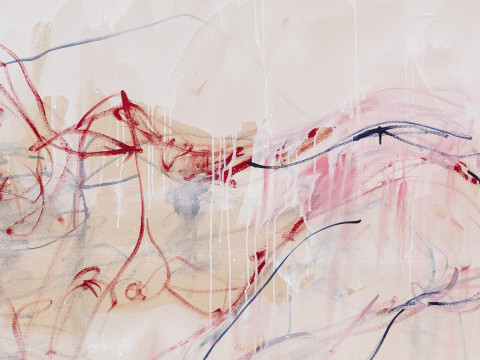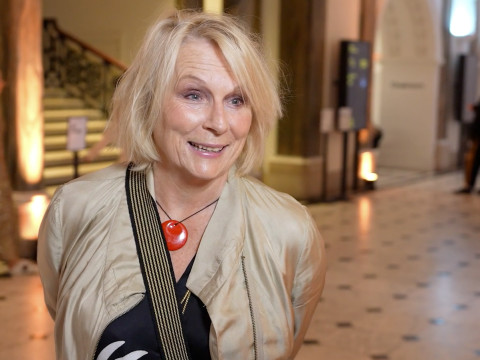
How to read it: The Exhibition of the Royal Academy in Pall Mall, 1771
By RA Collections team
Published on 5 August 2018
How much has the Summer Exhibition changed in 250 years? As the Great Spectacle exhibition looks back at the masterpieces from its history, we head back to 1771 to explore a work that documented the exhibition itself.
This print is the first known depiction of the Summer Exhibition
– or Annual Exhibition, as it was then called. Made by Academician Richard Earlom in 1771, after a watercolour by Charles Brandoin, it provides an important visual account of the early days of the Royal Academy – and of the emergence of public exhibitions generally. It's thought to be the earliest surviving image of any public art exhibition in Britain.

22,485 visitors came to this exhibition
which was held at the RA's first home – a set of auctioneers rooms at 125 Pall Mall. Here, you can see the main exhibition room at Pall Mall as it looked in 1771, housing a total of 276 paintings.
RA exhibitions were held there from 1769 until 1780 when they were moved to new, purpose-built apartments in Somerset House on the Strand (now the Courtauld Gallery. Over the course of the 19th century, the RA moved to new premises in Trafalgar Square and eventually to its current home at Burlington House in Piccadilly.
Paintings were hung cheek-by-jowl
in order to fit in as many as possible, as Earlom demonstrates in this print. This mode of display – a tradition that still continues today – was common in the late 18th century, and visitors would have understood a subtle hierarchy at work within the arrangement. The largest paintings, and those considered the most significant, were hung in the most prestigious position along what came to be known as "the line", about 2-3 feet above head height. These works could be easily visible even when the room was crowded. Paintings placed higher up the walls were harder to see and were described as having been "skyed".
Look at the centre of the print.
On the centre wall you can see James Barry’s painting The Temptation of Adam, which is now in the National Gallery of Ireland, given pride of place. It is an example of the type of “history painting” (that is, paintings of subjects from history, literature and the Bible) promoted by Sir Joshua Reynolds and other Royal Academicians at this time. Barry’s depiction of Adam and Eve was generally praised by critics of the day but some found the nudity shocking. One blamed the “insufficiency of drapery” down to Barry’s recent travels in warmer countries.
On either side of The Temptation of Adam are two full-length portraits by Thomas Gainsborough, of a Mr Nuthall and Captain Wade. Large-scale portraits of important people were also given prestigious positions in the display – not least because many members of the Academy made a comfortable living from such commissions.
The man appears to be eyeing up the woman through his monocle, while the woman peeps through her fan, perhaps at the nude figures in the painting.
Note the vulgarities.
One 18th-century journalist claimed that the reason the Royal Academy charged a shilling for entry to the exhibition was to keep out the “noxious effluvia of the vulgar herd”. If so, this strategy wasn’t always successful. Earlom’s print, which is based on a watercolour by Charles Brandoin, is itself something of a caricature, contrasting the high-minded rhetoric of history painting with the behaviour of some of the Academy’s visitors.
The poses of the couple beneath Barry’s painting, for instance, echo those of Adam and Eve themselves – but the man appears to be eyeing up the woman through his monocle, while the woman peeps through her fan, perhaps at the nude figures in the painting. A bespectacled clergyman in the centre of the room manages to miss the religious painting directly behind him, while an elderly woman sitting on the bench reads the catalogue to her young charge, who appears to have fallen asleep.
Politics is also at play.
The man in a cocked hat just to the right of Barry’s painting has been identified as the radical politician John Wilkes, MP for Middlesex. This presumably refers to the fact that a mob of Wilkes’ supporters attacked the Academy’s building in 1771, tearing down decorations that had been hung over the façade to celebrate King George III’s birthday.
The mischievous print was saved up for the following year.
The print was published by Robert Sayer, one of London’s most successful printsellers, who probably commissioned Charles Brandoin to produce the watercolour on which the print is based. To ensure that the print was topical and sold as many copies as possible, its publication was timed to coincide with the next RA exhibition in 1772.


